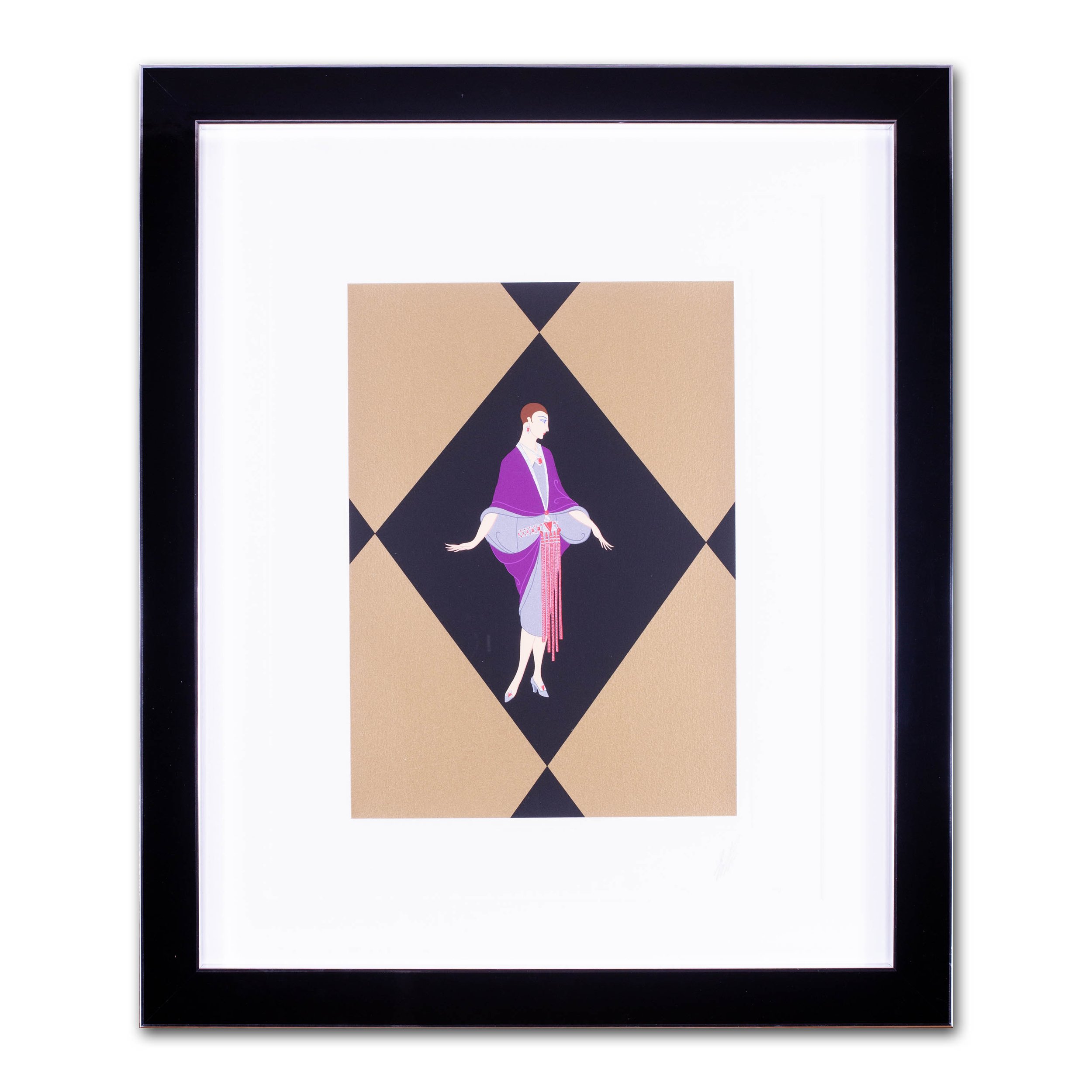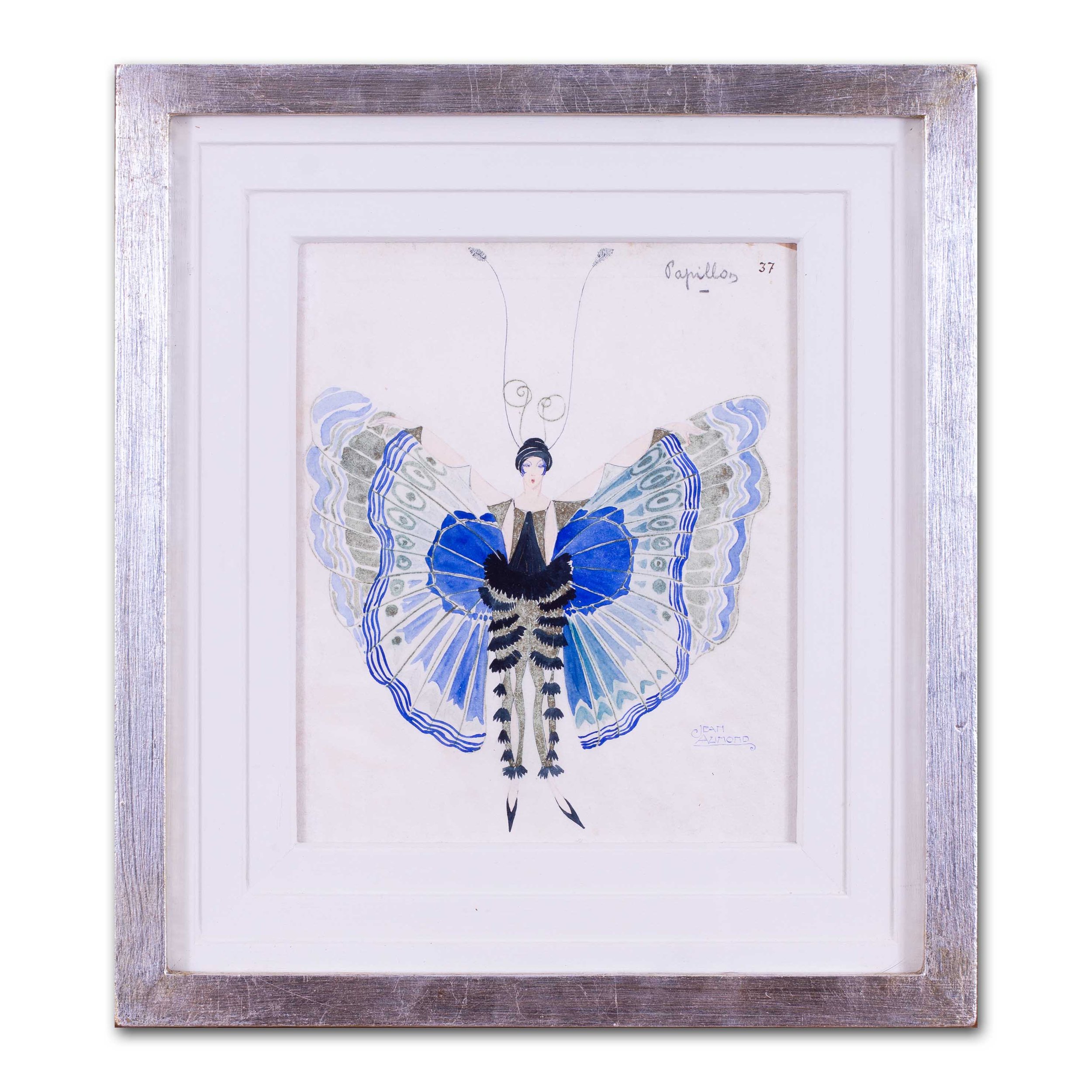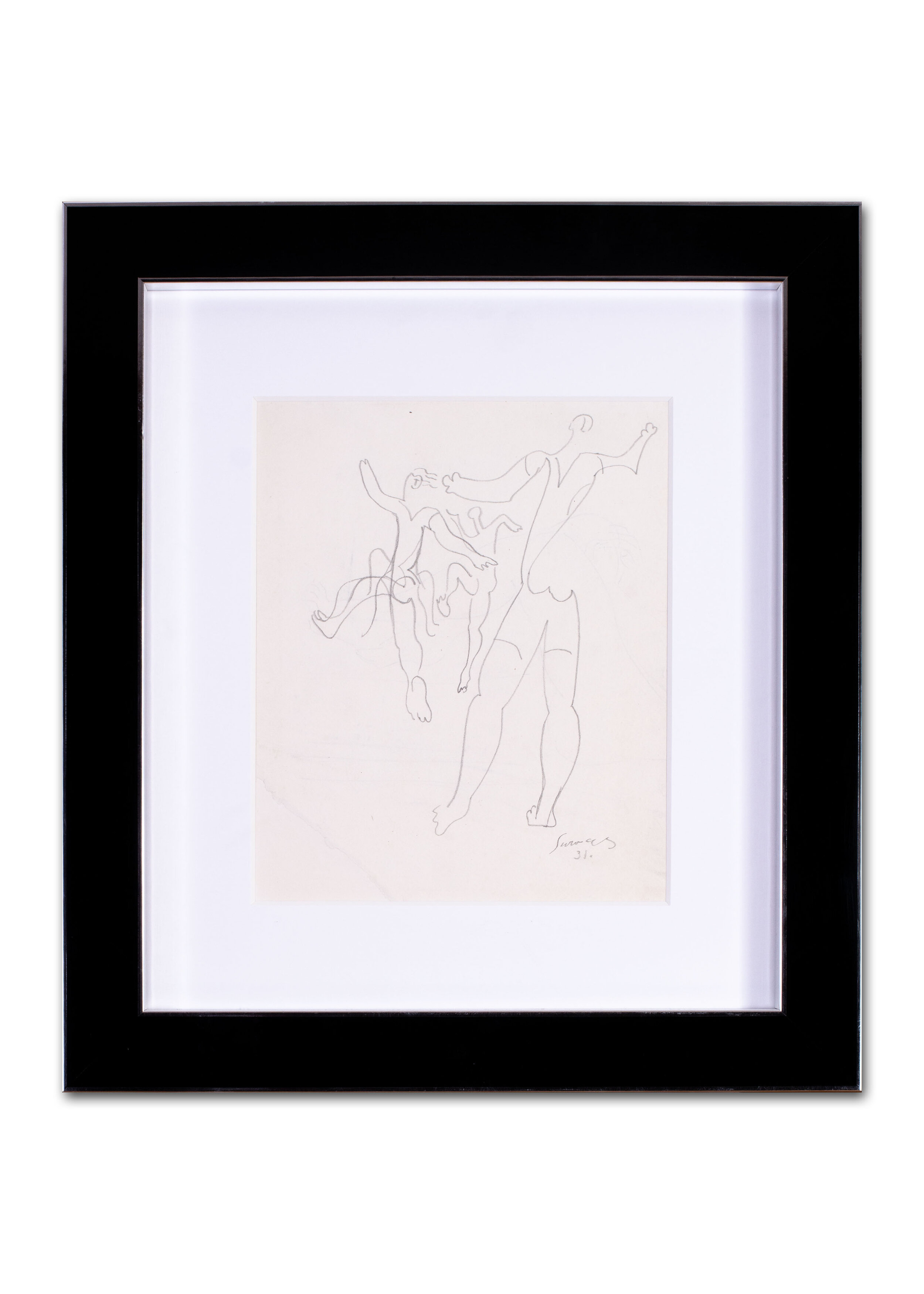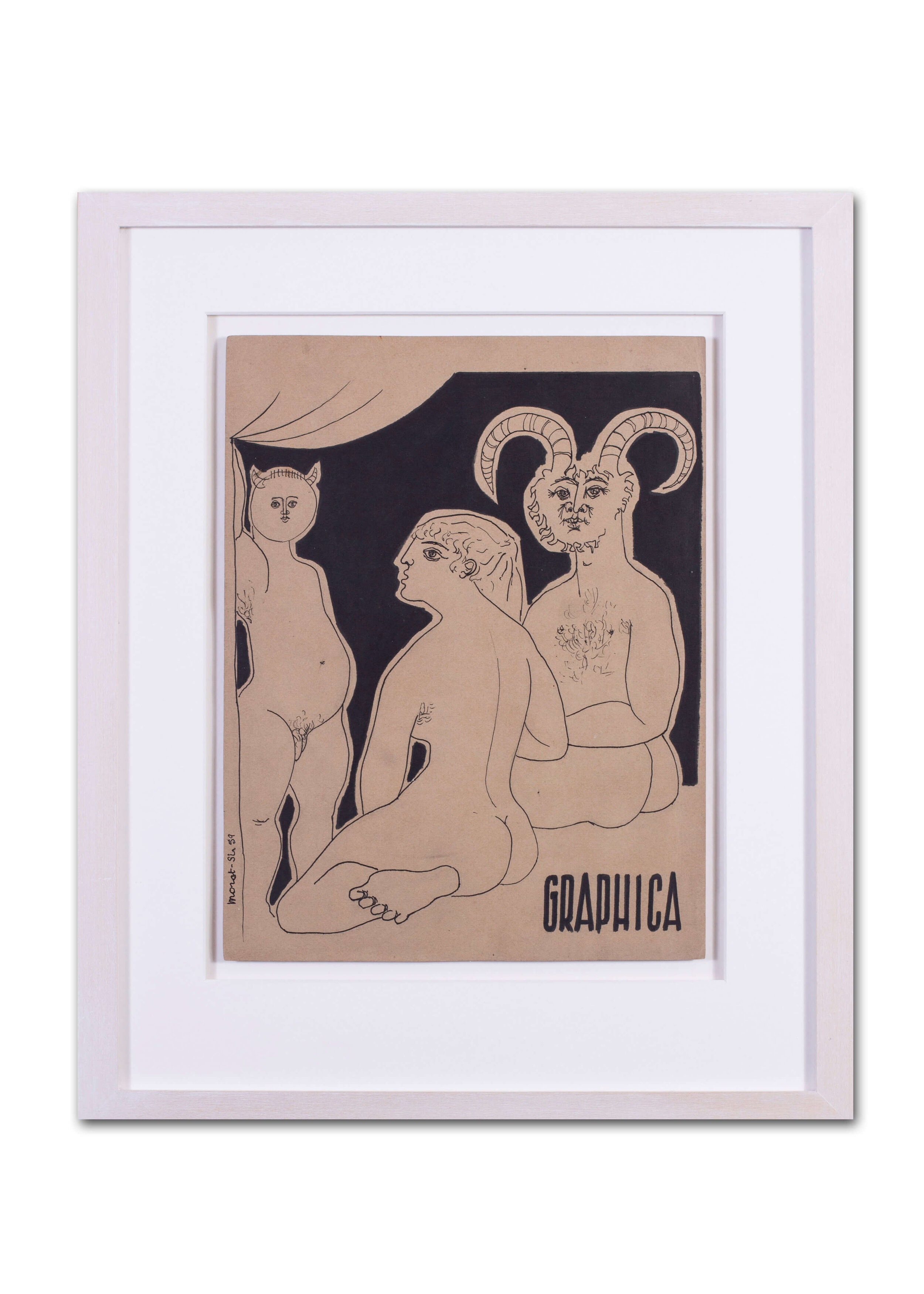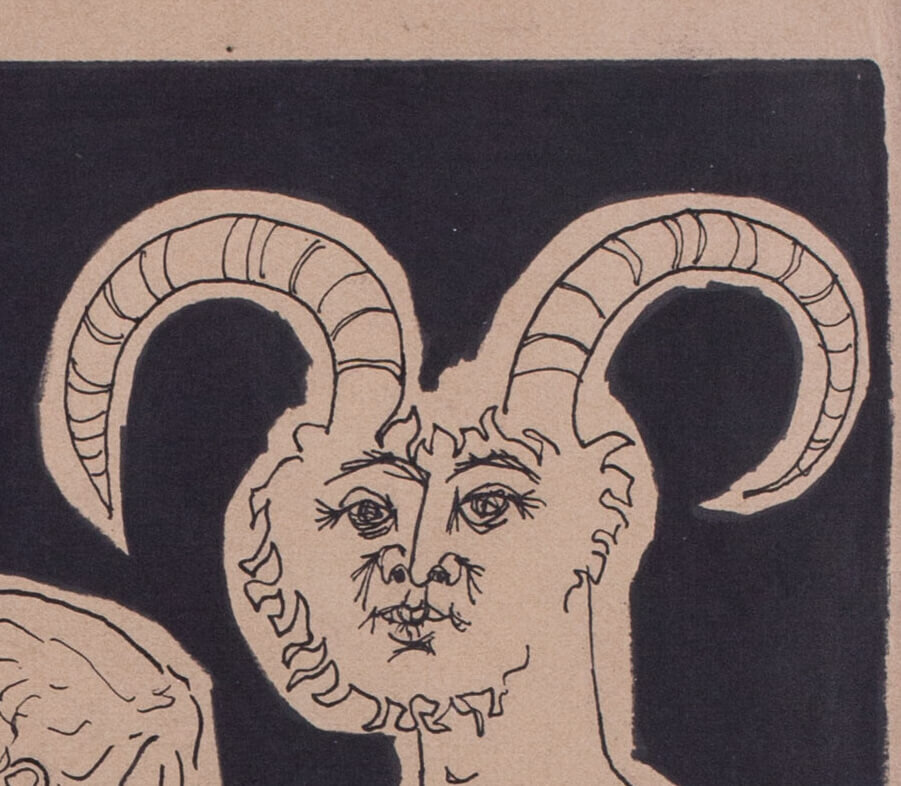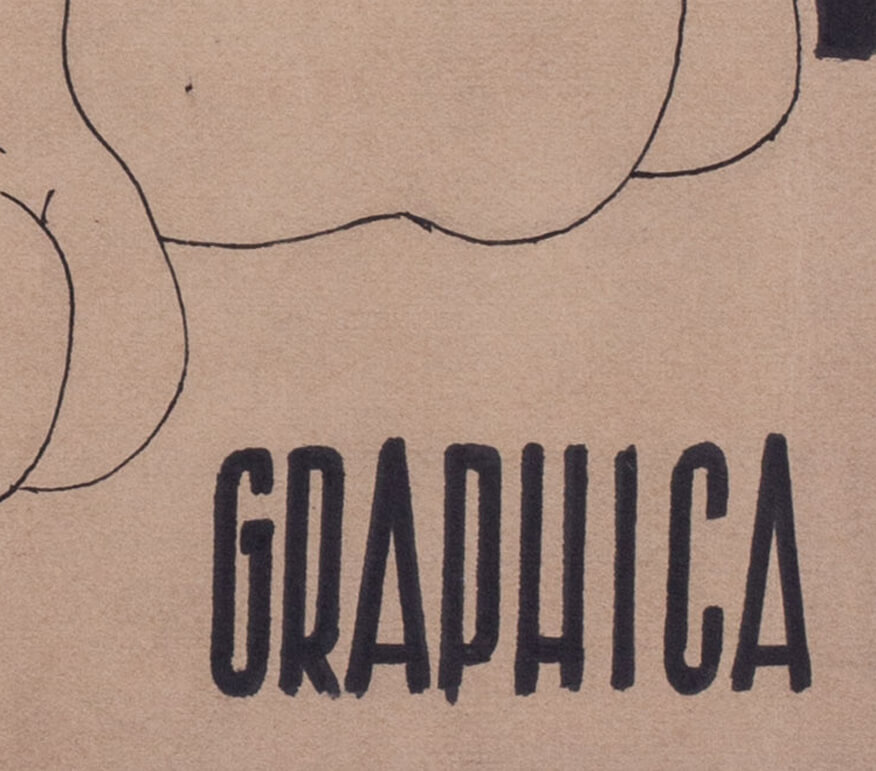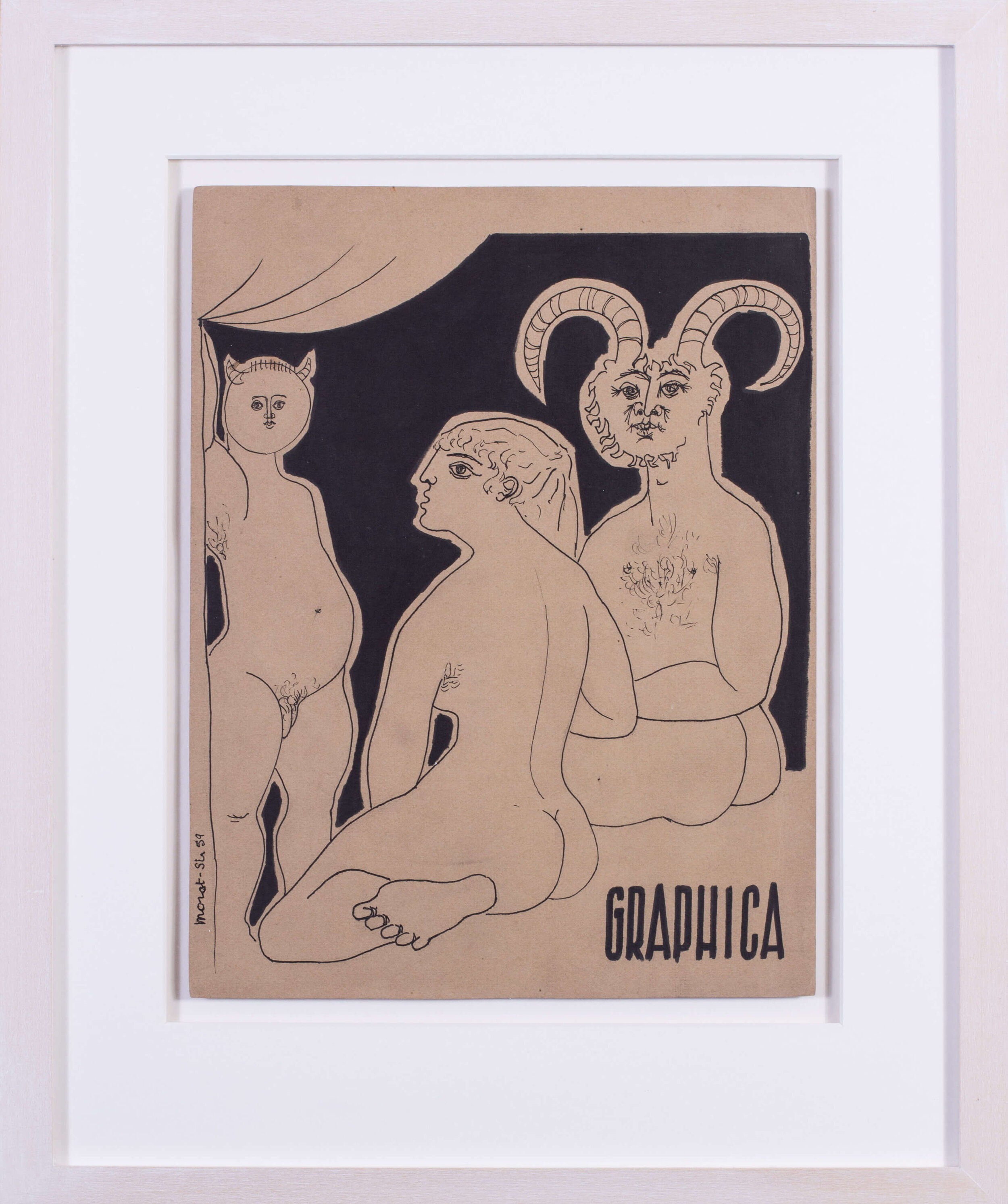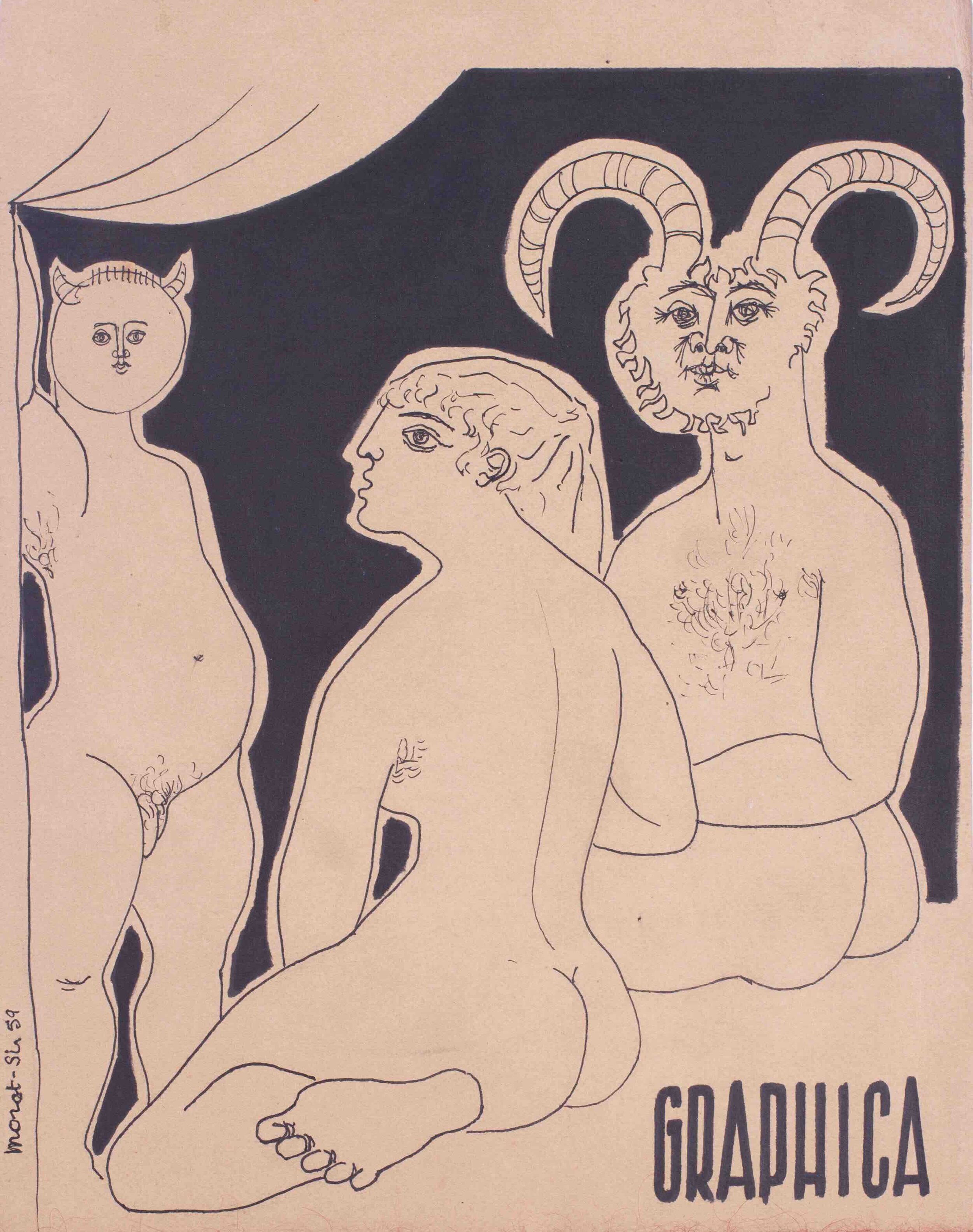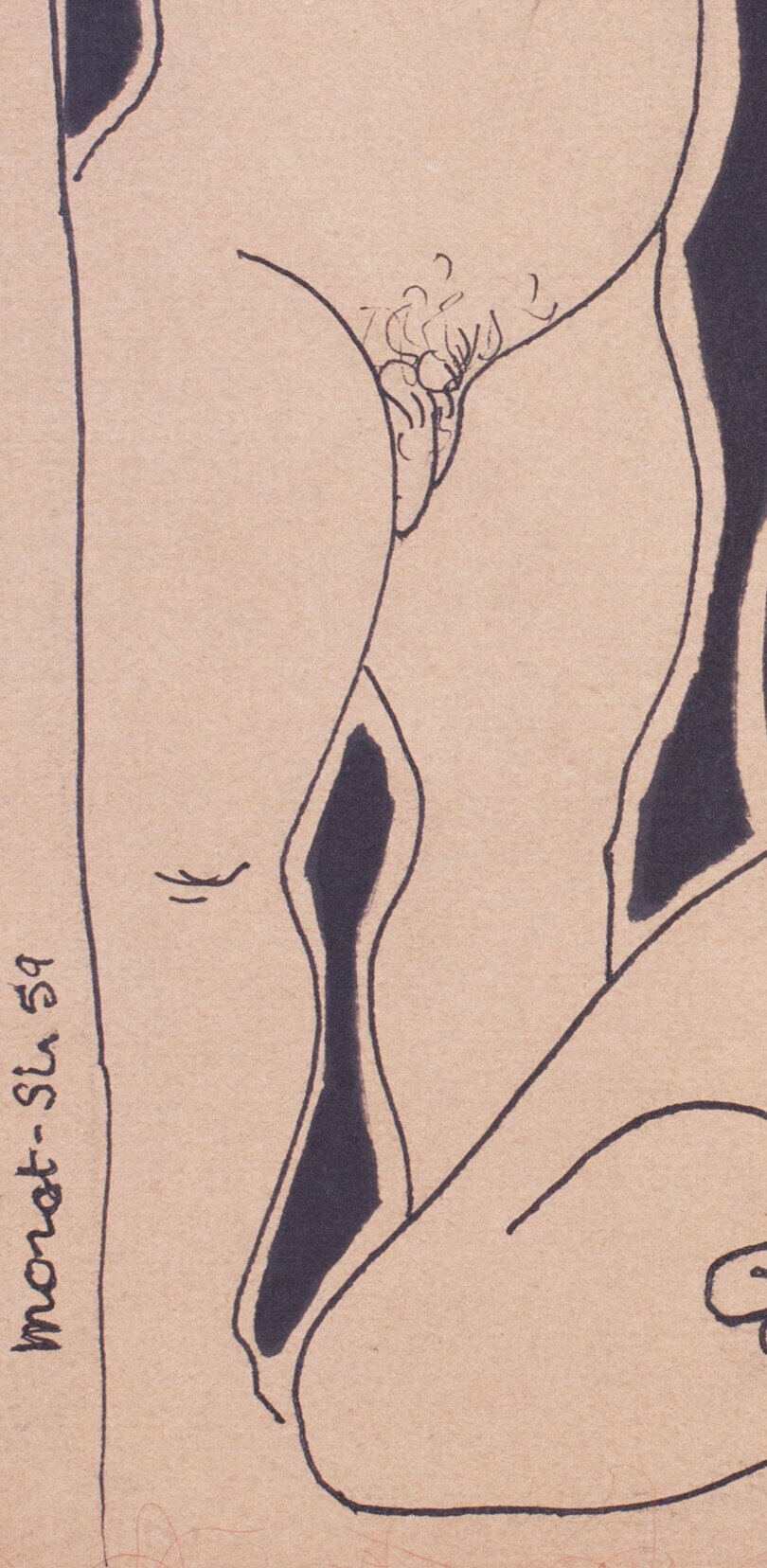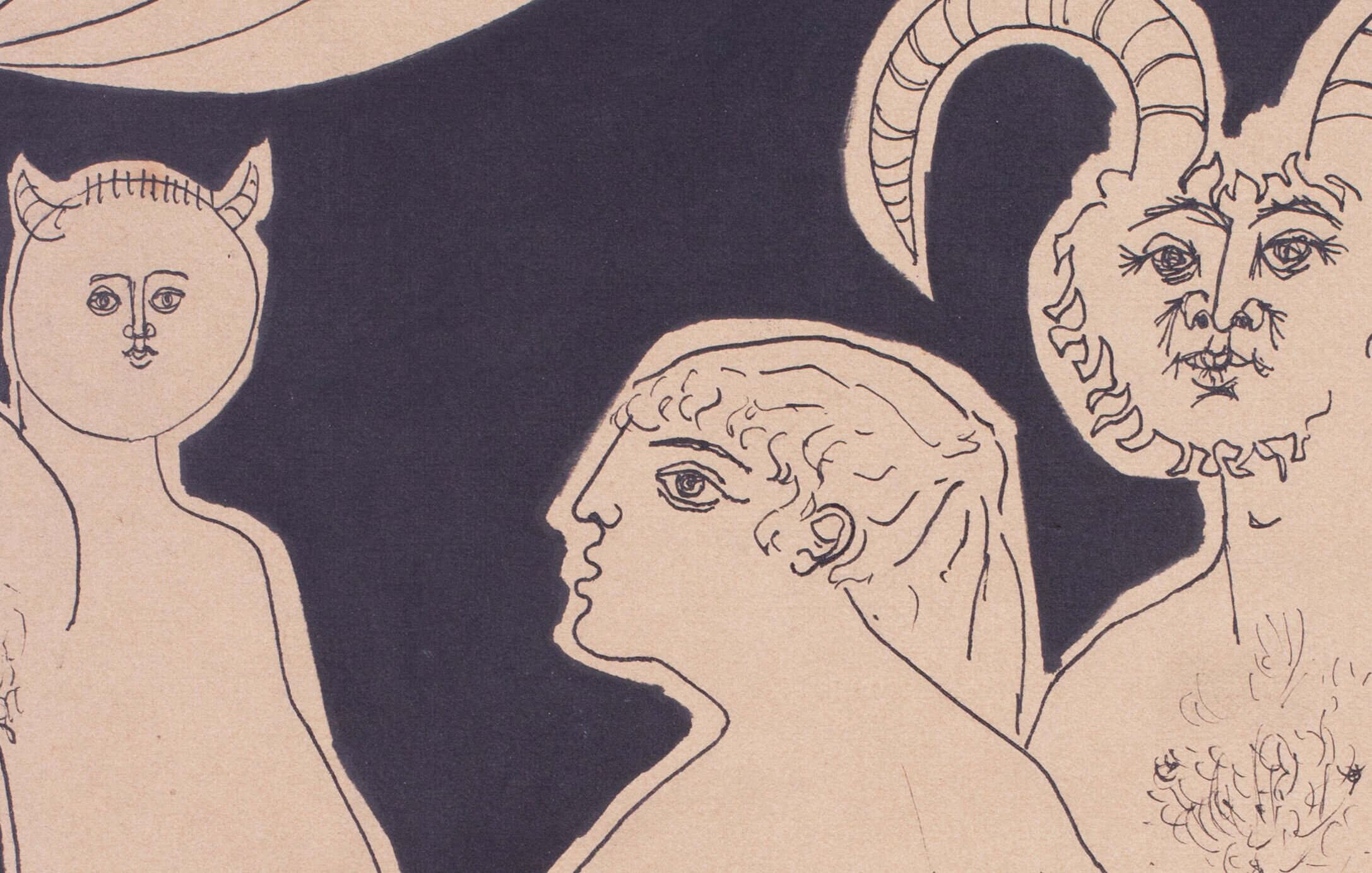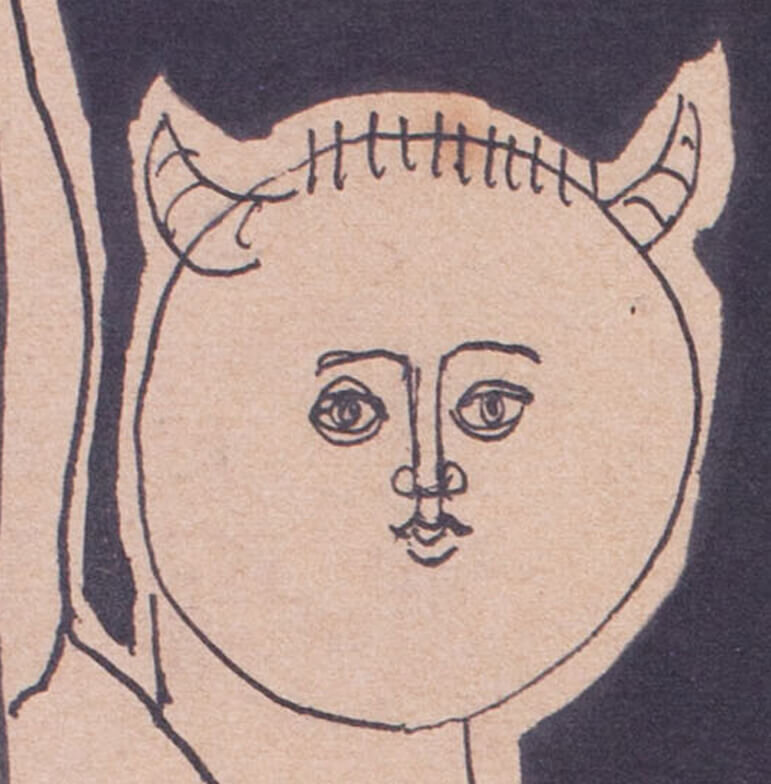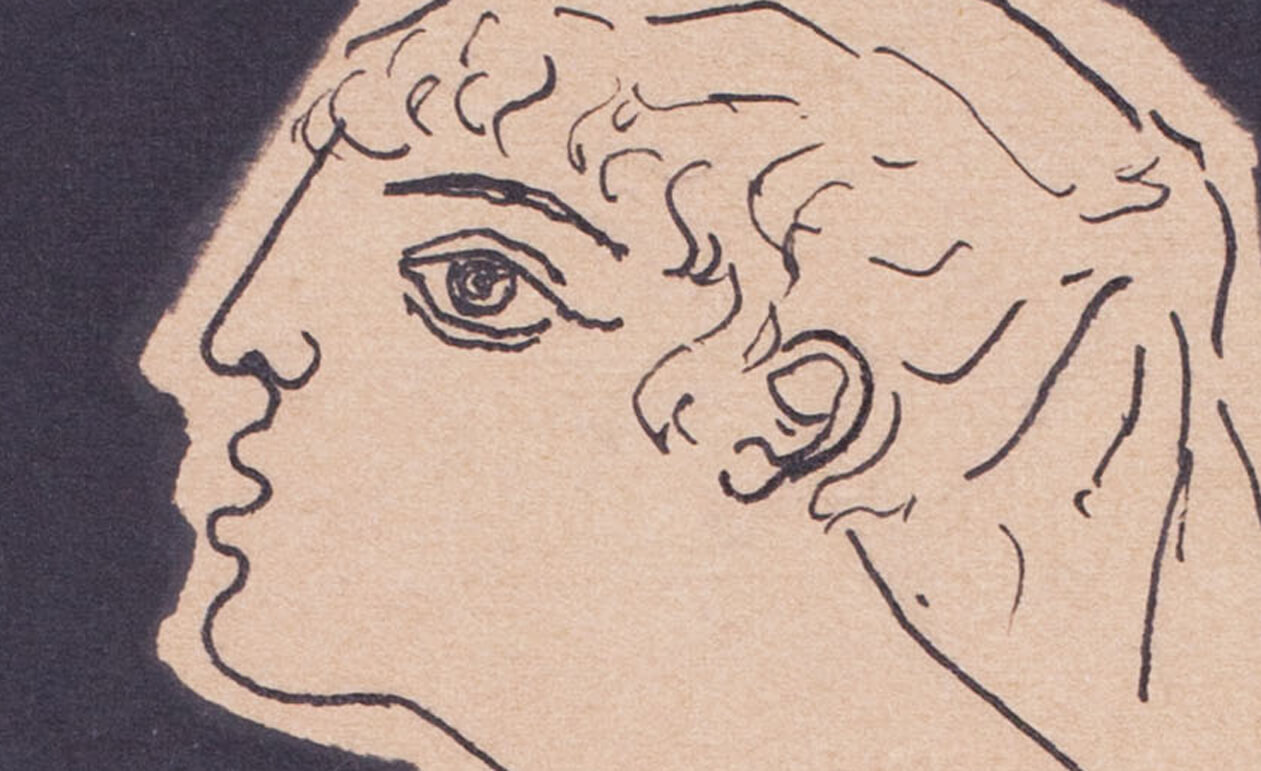Jean Emile Laboureur, 'Masque aux cheveux d'or'
Jean Emile Laboureur (French, 1877-1943)
Masque aux cheveux d'or (1912)
Woodcut
Signed `J E Laboureur’ (lower right) and stamped `The London Studio’ (lower right)
6.7/8 x 6 in. (17.5 x 15.3 cm.) to mount slip
Jean Emile Laboureur was a versatile artist who worked as a painter, printmaker, designer, and illustrator. He was born into a prosperous family in Nantes, France on August 15, 1877. Initially, Laboureur attended the Faculty of Law in Paris, but his love for art led him to switch to the Académie Julian. There, he learned the technique of wood engraving from Auguste Lepère and became friends with Henri Toulouse-Lautrec, who encouraged him to travel and pursue his artistic career.
For the next ten years, Laboureur traveled extensively, spending time in the print rooms in Dresden to study European prints. In 1903, he moved to the United States, living in New York and Pittsburgh and giving private lessons in etching to earn a living. During this time, he produced his first series of prints, Ten Etchings from Pittsburgh, in 1905.
After returning briefly to Nantes in 1907, Laboureur let a studio space in Chelsea, London, in November of that year. He returned to France in 1909, settling in Paris in 1910, where he fully embraced Cubism. When World War I broke out in 1914, he enlisted in the British army and served as an interpreter in the 12th division. During this time, he turned to engraving, as it allowed him to continue making art without a studio.
Laboureur's first solo exhibition was held in New York in 1917, and he married in 1919. That same year, he began illustrating books and went on to illustrate more than fifty books over the course of his career. In 1923, he founded the Société des Peintres-Graveurs Indépendants, which included members such as Braque, Dufy, Vlamnick, Laurencin, and Segonzac. In 1927, he and his wife moved to Kerfahler on the Breton coast.
Sadly, Laboureur suffered from hemiplegia in 1939, which left him paralyzed and unable to work. He passed away in Kerfahler, France, on June 16, 1943.
Jean Emile Laboureur (French, 1877-1943)
Masque aux cheveux d'or (1912)
Woodcut
Signed `J E Laboureur’ (lower right) and stamped `The London Studio’ (lower right)
6.7/8 x 6 in. (17.5 x 15.3 cm.) to mount slip
Jean Emile Laboureur was a versatile artist who worked as a painter, printmaker, designer, and illustrator. He was born into a prosperous family in Nantes, France on August 15, 1877. Initially, Laboureur attended the Faculty of Law in Paris, but his love for art led him to switch to the Académie Julian. There, he learned the technique of wood engraving from Auguste Lepère and became friends with Henri Toulouse-Lautrec, who encouraged him to travel and pursue his artistic career.
For the next ten years, Laboureur traveled extensively, spending time in the print rooms in Dresden to study European prints. In 1903, he moved to the United States, living in New York and Pittsburgh and giving private lessons in etching to earn a living. During this time, he produced his first series of prints, Ten Etchings from Pittsburgh, in 1905.
After returning briefly to Nantes in 1907, Laboureur let a studio space in Chelsea, London, in November of that year. He returned to France in 1909, settling in Paris in 1910, where he fully embraced Cubism. When World War I broke out in 1914, he enlisted in the British army and served as an interpreter in the 12th division. During this time, he turned to engraving, as it allowed him to continue making art without a studio.
Laboureur's first solo exhibition was held in New York in 1917, and he married in 1919. That same year, he began illustrating books and went on to illustrate more than fifty books over the course of his career. In 1923, he founded the Société des Peintres-Graveurs Indépendants, which included members such as Braque, Dufy, Vlamnick, Laurencin, and Segonzac. In 1927, he and his wife moved to Kerfahler on the Breton coast.
Sadly, Laboureur suffered from hemiplegia in 1939, which left him paralyzed and unable to work. He passed away in Kerfahler, France, on June 16, 1943.
Jean Emile Laboureur (French, 1877-1943)
Masque aux cheveux d'or (1912)
Woodcut
Signed `J E Laboureur’ (lower right) and stamped `The London Studio’ (lower right)
6.7/8 x 6 in. (17.5 x 15.3 cm.) to mount slip
Jean Emile Laboureur was a versatile artist who worked as a painter, printmaker, designer, and illustrator. He was born into a prosperous family in Nantes, France on August 15, 1877. Initially, Laboureur attended the Faculty of Law in Paris, but his love for art led him to switch to the Académie Julian. There, he learned the technique of wood engraving from Auguste Lepère and became friends with Henri Toulouse-Lautrec, who encouraged him to travel and pursue his artistic career.
For the next ten years, Laboureur traveled extensively, spending time in the print rooms in Dresden to study European prints. In 1903, he moved to the United States, living in New York and Pittsburgh and giving private lessons in etching to earn a living. During this time, he produced his first series of prints, Ten Etchings from Pittsburgh, in 1905.
After returning briefly to Nantes in 1907, Laboureur let a studio space in Chelsea, London, in November of that year. He returned to France in 1909, settling in Paris in 1910, where he fully embraced Cubism. When World War I broke out in 1914, he enlisted in the British army and served as an interpreter in the 12th division. During this time, he turned to engraving, as it allowed him to continue making art without a studio.
Laboureur's first solo exhibition was held in New York in 1917, and he married in 1919. That same year, he began illustrating books and went on to illustrate more than fifty books over the course of his career. In 1923, he founded the Société des Peintres-Graveurs Indépendants, which included members such as Braque, Dufy, Vlamnick, Laurencin, and Segonzac. In 1927, he and his wife moved to Kerfahler on the Breton coast.
Sadly, Laboureur suffered from hemiplegia in 1939, which left him paralyzed and unable to work. He passed away in Kerfahler, France, on June 16, 1943.






